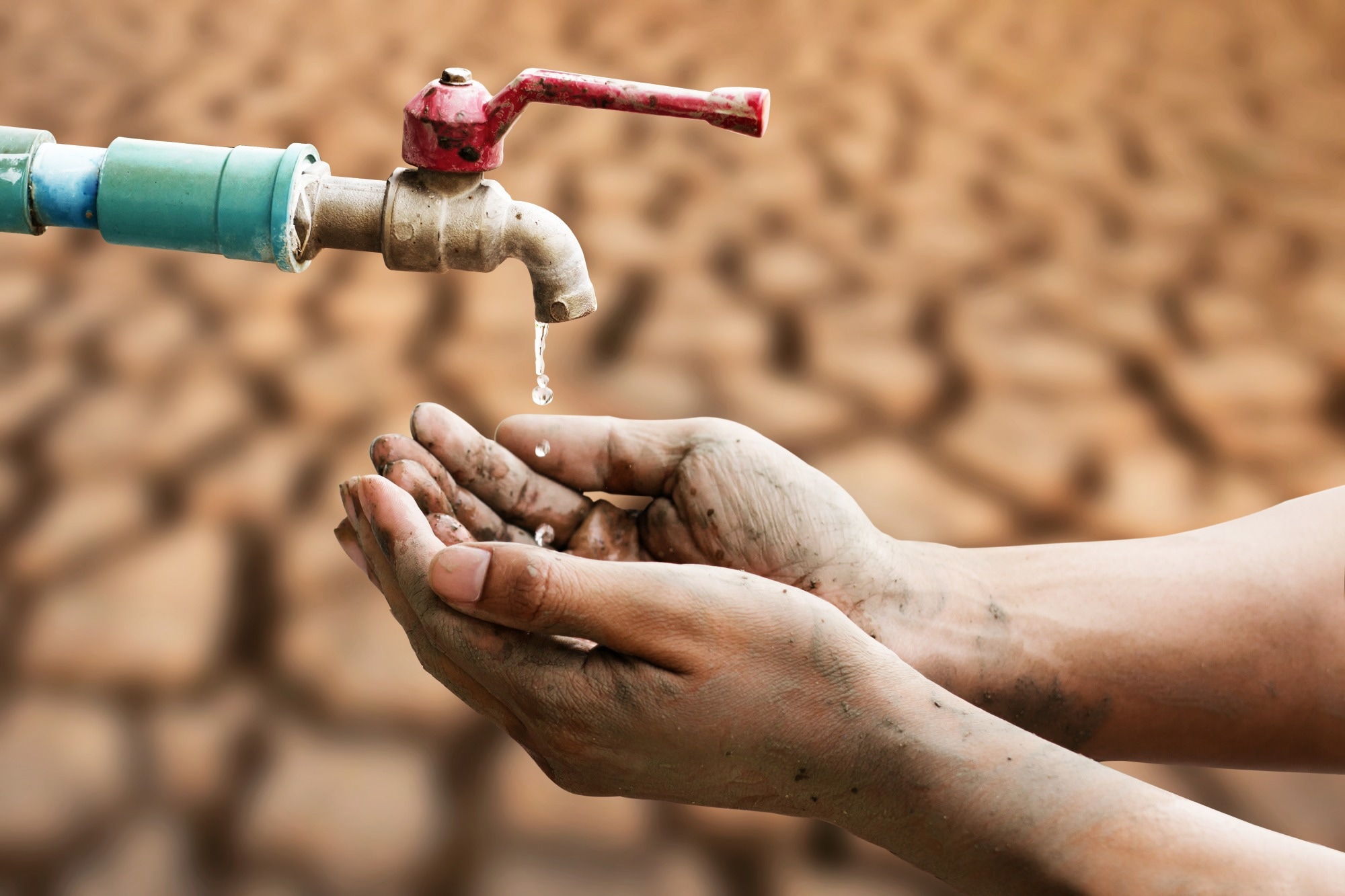In a recent study published in the journal Nature Climate Change, researchers from Utrecht University brought attention to the global clean water crisis. The researchers evaluated the scarcity of clean water until the end of the century using a model known as cutting-edge global water quantity and quality.

Image Credit: Piyaset/Shutterstock.com
Humans need clean water for drinking and sanitation, as well as for producing food, energy, and manufactured goods. As communities and policymakers wrestle with water scarcity issues, researchers at Utrecht University strive to illuminate the escalating global clean water crisis.
Current and Future Water Scarcity
The authors assessed present-day and future global water scarcity using simulations from a state-of-the-art water quantity and quality model.
Climate change and socioeconomic developments have multi-faceted impacts on the availability and quality of, and demands for, water resources in the future, changes in these three aspects are crucial for evaluating future water scarcity.
Dr. Edward Jones, Study Lead Author, Utrecht University
According to the report, 55 % of people on the planet today reside in places with at least one month's worth of uncontaminated water scarcity per year.
Jones remarked, “By the end of the century, this may be as high as 66%.”
Strong Regional Differences in Future Water Scarcity
Global water scarcity is expected to worsen in the future, but the extent and effects of this issue will vary significantly across different regions of the world. For instance, the projected increase in water scarcity in Western Europe and North America is expected to be seasonal, primarily occurring during specific months and mainly influenced by the availability of water. In contrast, in developing countries, water scarcity is likely to be more extensive geographically and last for longer periods throughout the year.
Increases in future exposure are largest in the Global South. These are typically driven by a combination of rapid population and economic growth, climate change, and deteriorating water quality.
Dr. Edward Jones, Study Lead Author, Utrecht University
Quality: The Invisible Part of Water Scarcity
Despite being crucial for safe water use, water quality remains an under-represented component of water scarcity assessments.
Jones explained, “Previous assessments still predominantly focus on water quantity aspects only, yet, the safe use of water also depends on the quality.”
Thus, standardizing the inclusion of water quality in evaluations of water shortage and in the development of management plans to lessen it was another important goal of this research.
The lack of clean water presents a systemic risk to both humans and ecosystems, which is becoming increasingly difficult to ignore. Our work highlights that, alongside substantially reducing our water demands, we must place an equally strong focus on eliminating water pollution to turn the tide on the global water crisis.
Dr. Edward Jones, Study Lead Author, Utrecht University
Journal Reference:
Jones, E. R., et al. (2024) Current and future global water scarcity intensifies when accounting for surface water quality. Nature Climate Change. doi.org/10.1038/s41558-024-02007-0.